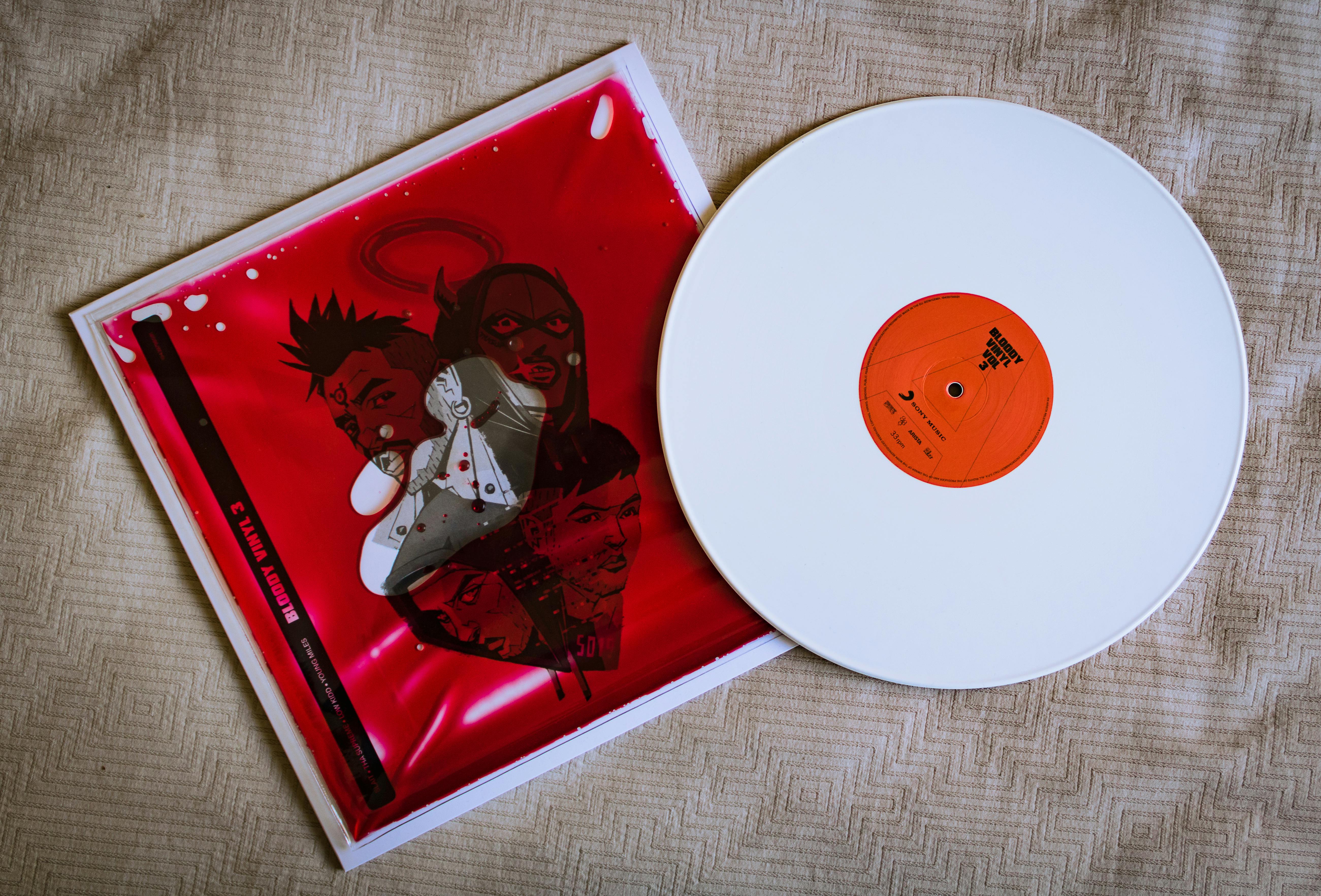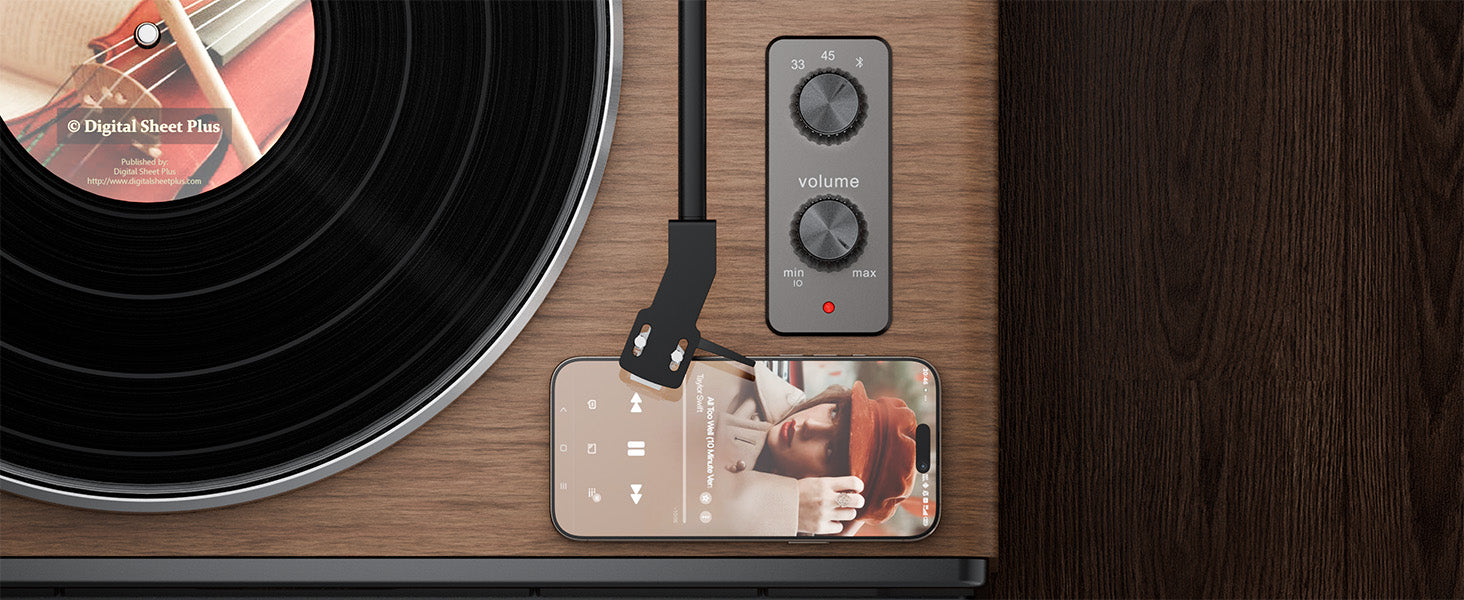Put on a record. Not as background noise while you scroll through your phone, but with intention. Choose a master of the craft—Aretha Franklin's I Never Loved a Man the Way I Love You. As the needle finds the groove, something happens that a digital stream struggles to replicate.
It’s not just the music; it’s the presence. You don't just hear the notes of "Respect"; you feel the air moving in the studio. You perceive the microscopic grit in Aretha's voice as she pushes a note to its breaking point. You sense the sheer physicality of the performance.
Why? Is it just nostalgia? A psychological trick?
No. The reason vinyl enhances the emotional depth of a great vocalist lies in the fundamental nature of sound itself, and the profound difference between capturing reality and reconstructing it.
The First Principle: An Unbroken Line vs. A Billion Dots
To grasp this, we must go to the core of what sound is. Sound is an analog wave—a continuous, flowing, infinitely complex vibration. The human voice, our most primal instrument, is the epitome of this.
-
Analog Recording (Vinyl): The entire vinyl process is a physical transfer of this wave. A microphone diaphragm vibrates, creating an analog electrical signal. A cutting lathe then carves this unbroken electrical signal as a continuous, wiggling groove into a master disc. Your turntable’s stylus traces this physical groove, recreating the original, continuous electrical signal. It is a direct, physical imprint of the soundwave. Think of it as a sculptor taking a perfect clay impression of a face.
-
Digital Recording (Streaming/CDs): Digital audio works differently. It takes the analog wave and measures it at discrete points in time, thousands of times per second (a process called sampling). It assigns a numerical value to each measurement. To play it back, a converter essentially "connects the dots" to rebuild the wave. Think of this as creating a mosaic of that same face using thousands of tiny tiles.
While a high-resolution digital mosaic can be incredibly detailed and accurate, it is fundamentally a reconstruction. The information between the dots is an educated guess. An analog recording is the original, unbroken reality.
The Soul is in the "Imperfections"
This difference is critical when it comes to the human voice. The emotion in a performance by Aretha Franklin, Otis Redding, or Amy Winehouse isn't just in the pitch-perfect notes. It’s in the spaces between. It’s in the:
-
Micro-dynamics: The tiny, subtle shifts in volume and intensity within a single syllable.
-
Harmonic Texture: The complex overtones and harmonics that give a voice its unique timbre—its "color" and "feel."
-
Breath and Friction: The sound of air passing over vocal cords, the slight catch in the throat, the almost imperceptible grit.
These are the elements that digital sampling can struggle to capture with complete fidelity. The process of quantization can subtly smooth over these "imperfections," resulting in a sound that is technically clean but emotionally sterile. Analog, by preserving the entire continuous wave, preserves these so-called imperfections. It captures the ghost in the machine—the raw, unfiltered, human element.
This is why we often use the word "warm" to describe vinyl. It’s not just a frequency response. It's the presence of this complete sonic information, the subtle harmonic distortion from analog equipment, and the faint surface noise that tricks our brain. It sounds more real because it's less perfect, just like life itself.
The Ritual and the Machine: You Are Part of the Equation
The medium is only half the story. The other half is you, the listener, and the machine you use.
A vinyl record cannot be passively consumed. It demands a ritual. You select the album, remove it from the sleeve, place it on the platter, and lower the tonearm. This act of engagement primes your brain for active, focused listening. You are not multitasking; you are receiving the art. This focus alone amplifies the emotional impact.
But this entire experience is contingent on the quality of your turntable. A cheap, poorly built record player with a low-grade stylus will not only fail to extract this delicate information but will actively destroy it. The stylus is your translator. If it's a clumsy one, it will miss all the nuance and poetry of the original language.
To truly honor a recording as iconic as Aretha's, you need a machine built on audiophile principles. A turntable like the XJ-HOME Recoder is designed precisely for this. It prioritizes a stable platter, a well-engineered tonearm, and a quality cartridge capable of tracing the groove with precision. It is built to excavate the maximum amount of detail from the vinyl, ensuring that the raw emotion captured in the master tape is what reaches your ears. The fidelity of the machine determines the emotional clarity of the performance.
Conclusion: Hearing the Human Being
Listening to a great singer on vinyl is not about chasing some mythical, perfect sound. It’s about getting closer to the truth of the performance. It's about choosing an unbroken physical impression over a brilliant digital reconstruction.
The continuous groove of a record holds more than just notes; it holds the energy, the breath, the strain, and the soul of the artist in the room on the day it was recorded. It allows you to hear not just the singer, but the human being. And that is a depth no string of ones and zeroes can ever fully replicate.
Understanding Check: Questions & Answers
1. Question: The article uses the analogy of a "painting" (analog) versus a "mosaic" (digital). Why does this distinction matter more for a complex, raw vocal performance than for a purely electronic synthesizer track?
Answer: This distinction matters more for vocals because the human voice is an organic and infinitely complex instrument. Its emotional power is carried by subtle, non-linear details: breath sounds, micro-vibrations, and complex harmonic overtones that give it a unique texture. These are the equivalent of the seamless brushstrokes and color blending in a painting. A synthesizer, by contrast, often generates mathematically precise, predictable waveforms. A digital "mosaic" can replicate these clean, defined tones with extremely high accuracy because the "dots" align perfectly with the nature of the sound. The raw, "imperfect" and continuous nature of a human vocal performance, however, is where the information between the digital samples resides, making the unbroken, continuous "painting" of an analog recording a more faithful medium for capturing its emotional essence.
2. Question: The article mentions that "imperfections" and even surface noise on vinyl can enhance the listening experience. How can something technically flawed, like noise, create a perception of higher emotional reality?
Answer: This taps into human psychology and how our brains process reality. The real world is not silent or sterile. It's filled with ambient sound, air, and texture. The subtle surface noise of a record (the "crackle and pop") and the warm harmonic distortion from analog gear act as a psychoacoustic trigger. They provide a subliminal "noise floor" that mimics a live, physical space. This prevents the sound from feeling like it's emerging from a dead-silent digital void. This slight "flaw" gives the recording a sense of place and tangibility, tricking our brain into perceiving it as more present and "real." It lowers the barrier of disbelief, making it feel less like a recording and more like an event happening in the room with you, thus heightening the perceived emotional connection.
3. Question: If the analog groove contains so much rich, emotional detail, why would playing a valuable Aretha Franklin record on a cheap, all-in-one "suitcase" player be a disservice to the music?
Answer: Because the vinyl record is only a storage medium for potential information; it is not the sound itself. The turntable is the instrument required to extract that information. A cheap "suitcase" player is a fundamentally compromised instrument. Its low-mass platter has unstable speed (wow and flutter), distorting the pitch. Its heavy, non-adjustable tonearm and poor-quality conical stylus are incapable of accurately tracing the complex, high-frequency modulations in the groove where the vocal nuances lie. Instead of delicately reading the information, it crudely plows through the groove, missing vast amounts of detail and permanently damaging the vinyl with each pass. It fails to translate the stored emotion and actively erases it for future playback, making it a profound disservice to the artistry preserved on the record.





Leave a comment
All comments are moderated before being published.
This site is protected by hCaptcha and the hCaptcha Privacy Policy and Terms of Service apply.